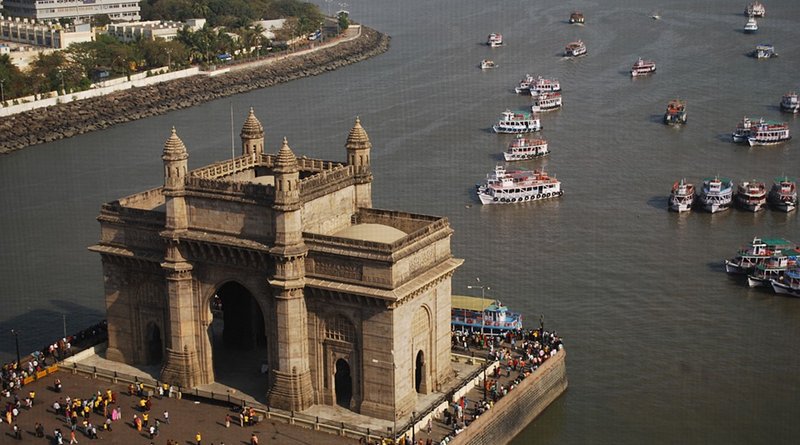India Not Ready For RCEP – Analysis
By Observer Research Foundation
By Nilanjan Ghosh*
On 15 November 2020, 15 nations (the 10 ASEAN countries, Australia, China, Japan, New Zealand and South Korea) signed the Regional Comprehensive Economic Partnership (RCEP). The clamour around India’s decision to walk away from the mega trade deal was loud. But the trading bloc has kept the door open for India to return to the negotiating table.
The economic backdrop to India’s departure is dismal. The nationwide lockdown in response to COVID-19 had a deleterious impact on India’s economy, with GDP contracting by 23.9 per cent in the first quarter and 7.5 per cent in the second. The silver lining is that the second quarter figure was better than expected, but big problems remain. Indian growth over the last three decades has been largely consumption driven, but consumption has been hit by lockdown. Loan moratoriums are unlikely to help much, as only a small proportion of the Indian population have formal sector loans. To boost aggregate demand, disposable incomes need to be stepped up through fiscal measures such as direct tax deductions and targeted direct income transfers.
India’s economic growth was slowing even prior to the pandemic, likely due to a poor combination of structural and business cycle issues. With the pandemic, India’s ambition of achieving aUS$5 trillion economy by 2024 is unattainable, requiring GDP to double with herculean average annual growth rates of 23–24 per cent. The present signs of economic revival are, at most, a result of latent demand carried over from the lockdown and some supply-side measures brought about through expansionary fiscal and monetary policies.
Prime Minister Narendra Modi’s speech in May 2020 laid out a grand vision of restarting the economy and making it more self-reliant. This ‘self-reliance’ is an extension of his earlier ‘Make in India’ idea, and should be interpreted as a means of creating a robust domestic economy through investment and consumption demand.
This is neither import substitution, nor does it preclude foreign investment. But without a congenial business environment, achieving a robust domestic economy is not possible. Hence, Modi emphasised the need to address land, labour, liquidity and laws to create the necessary institutional incentives for kick-starting the languishing economy.
Unfortunately, the vision has hardly been translated into action. Proposed supply-side interventions such as easing credit and certain factor market incentives to micro, small and medium enterprises (MSMEs) are desirable, but there has been little impetus to boost demand. The government’s decision to not have global tenders for procurements up to Rs2 billion (US$27 million) will help insulate MSMEs from global competition but will not alleviate the long-term problems. The National Steel Policy 2017, for instance, identifies long-term problems as being a lack of domestic demand, high input costs and cheap imports from China and ASEAN countries. These are symptoms of the problem not its cause.
Many have expressed that the withdrawal from RCEP is a missed opportunity for India, as the deal would have helped Indian businesses to integrate effectively into regional Asian value chains. RCEP would also enable India to attract greater investment due to preferential access to the growing market of RCEP countries and the flight of capital from China in response to the US–China trade war and the pandemic.
For India to reap these benefits, it needs a competitive business environment. In terms of the ease-of-doing-business index, India lags behind all RCEP countries except Cambodia, Laos and the Philippines. This makes it unlikely that RCEP would be beneficial to either the ‘Make in India’ or the ‘self-reliant India’ visions unless the necessary institutional factor and product market reforms are implemented. These include reforms in a fragmented labour market — despite the recent passage of three bills in 2020 that have their own problems — and taxes, including the consumption tax regime that has a high cost of compliance.
Putting the geopolitical issues involved with the presence of China in the bloc aside, there are also macroeconomic and equity concerns in India over RCEP. According to some estimates, the expected gains for India in GDP, trade and investment through RCEP may be offset by a decline in overall economic well-being, given distributive impacts across the value chain. This indicates a potentially problematic impact of the mega trade deal in an economy that is in a poor position to adopt it.
But some analyses imply that RCEP could result in significant trade shifting from non-member countries to member countries, with the preferential treatments creating a relative trade barrier for the former. With India outside the arrangement, this would cost India in the long term.
There is no analysis estimating the impacts of RCEP on the value chain. This is critical — the lockdown has witnessed the decline of many intermediating organisations in the MSME sector who are yet to recover from the shocks.
There are contentions that staying outside RCEP is a flawed step with many a missed opportunity. Yet the current post-lockdown Indian economy seems to be ill-prepared to embrace a trade deal like RCEP. India needs to urgently get its house in order by boosting demand, rationalising value chains, creating better institutional arrangements and a more competitive economy.
*Nilanjan Ghosh is Director of the Observer Research Foundation, Kolkata.


India remains a country with unrealised potential. It’s political and economic environment is toxic with little hope of change with this regime. The governance of the country under BJP is abysmal. Modi is impulsive in his decisions. The withdrawal of currency was a disaster. His appointment of Adityanath as Chief Minister of U.P is another disaster. U.P remains the least progressive State with the lowest GDP of any State. The only period of exceptional growth was when Manmohan Singh followed by Vajpayee as PM. Modi’s Hindu based Nationalist agenda is bound to fail.